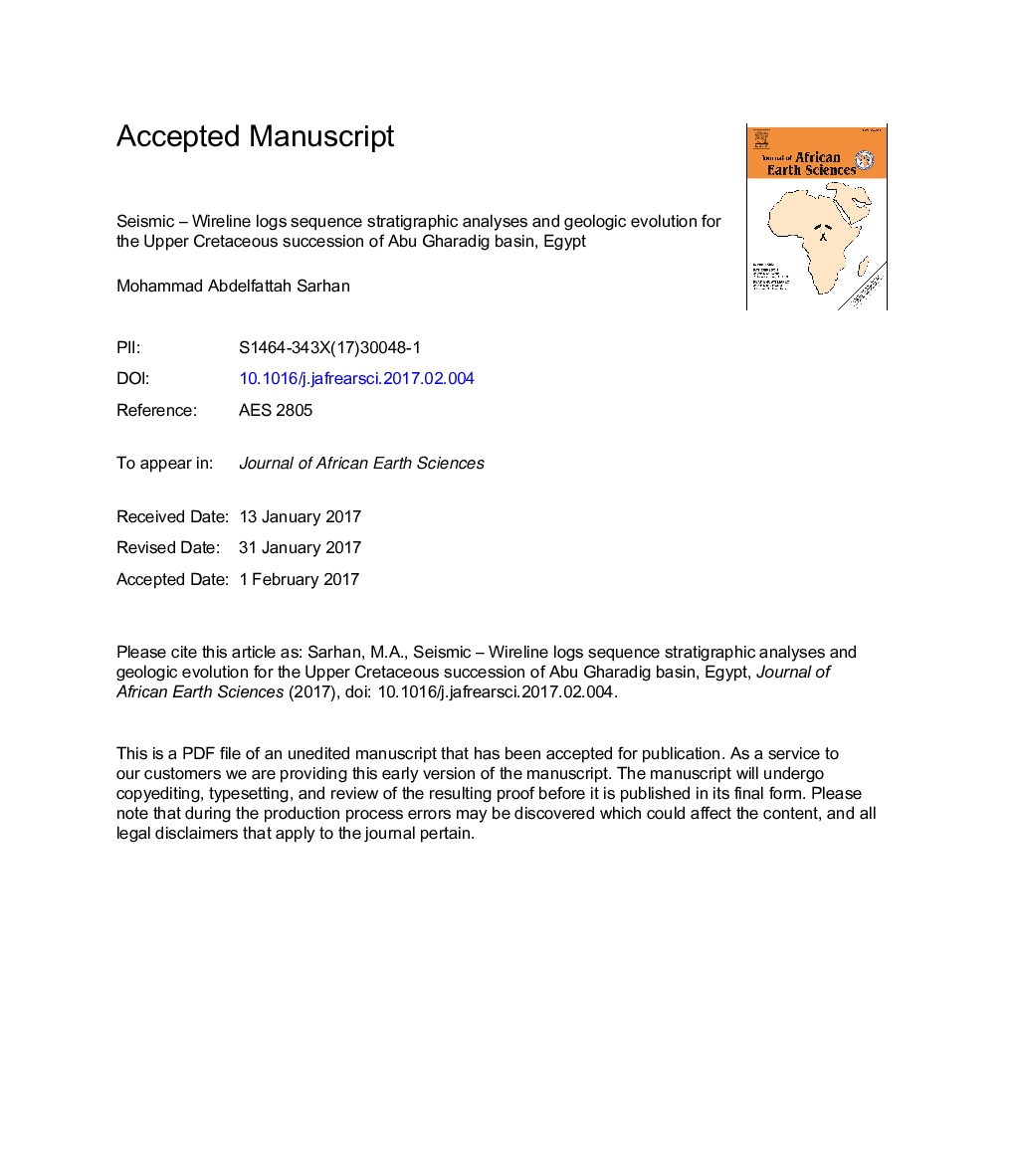| Article ID | Journal | Published Year | Pages | File Type |
|---|---|---|---|---|
| 5785709 | Journal of African Earth Sciences | 2017 | 38 Pages |
Abstract
The Upper Cretaceous megasequence in the northern part of the Egyptian Western Desert has been classified into four 2nd order depositional sequences. These sequences started with the Cenomanian SQ-I topped by the Turonian - Santonian SQ-II. However, both SQ-III and SQ-IV represent the Campanian- Maastrichtian time span. The interpreted 2nd order SQ-I and SQ-II have been further subdivided into six smaller 3rd order sequences (SQ-1 to SQ-6). The depositional history started during the Early Cenomanian times, characterized by wide marine invasion enabled the deposition of the shallow marine Bahariya Formation (SQ-1). The Upper Cenomanian times, witnessed a rapid subsidence, simultaneously with new marine transgressive phase. This is resulted in the deposition of SQ-2, consuming the entire sediments of the Abu Roash G Member. During the Turonian - Coniacian times the northern parts of Egypt showed successive oscillating transgressive - regressive marine cycles led to equivocal sedimentary bodies of the Turonian-Coniacian Abu Roash Formation (SQ-3, SQ-4, and SQ-5). During the Santonian age, the northern parts of Egypt were subjected to tectonic crustal shortening, producing large scale folds. As a result, a new tectonically-overprinted marine depositional cycle started and marked by rapid phase of basin subsidence. This was accompanied by a deep marine invasion covered most of the northern parts of Egyptian lands, depositing the lower parts of the Khoman- B (SQ-6) under transgressive depositional conditions. By the end of Santonian cycle, the upper parts of the Khoman Formation B Member was deposited during a gradual, and slow relative sea level drop ending the deposition of SQ-6. At the beginning of the Campanian - Maastrichtian times, a new widespread sea-level rise associated with basin subsidence. Accordingly, two successive depositional cycles were thus initiated, forming SQ-III and SQ-VI sequences separated by unconformity type-2 boundary (SB-8).
Related Topics
Physical Sciences and Engineering
Earth and Planetary Sciences
Geology
Authors
Mohammad Abdelfattah Sarhan,
